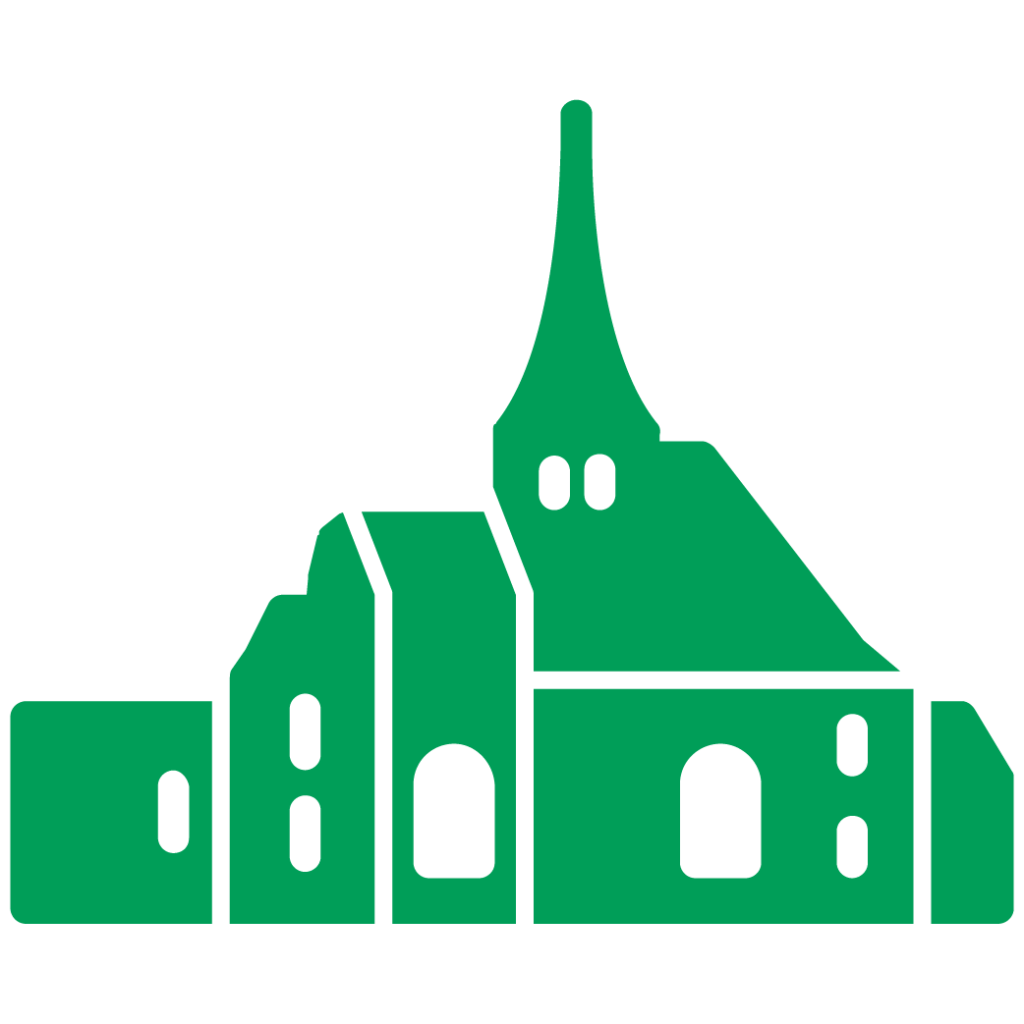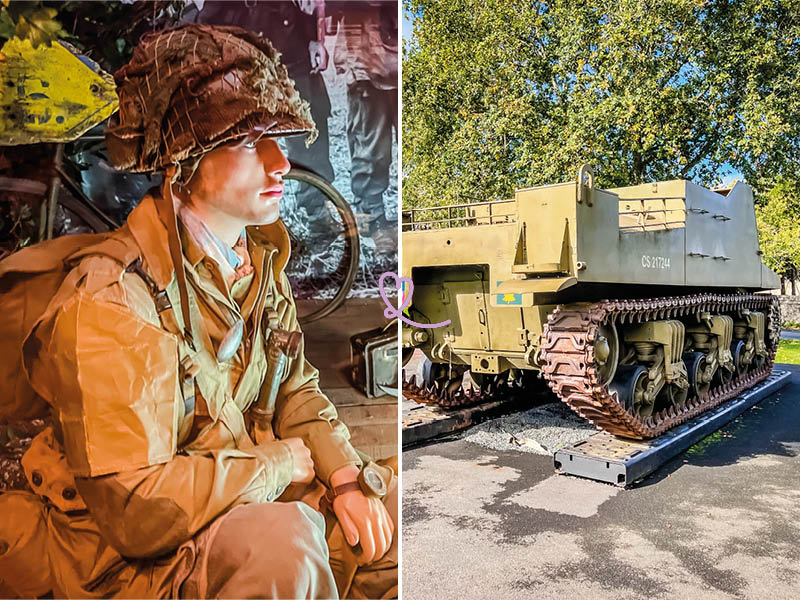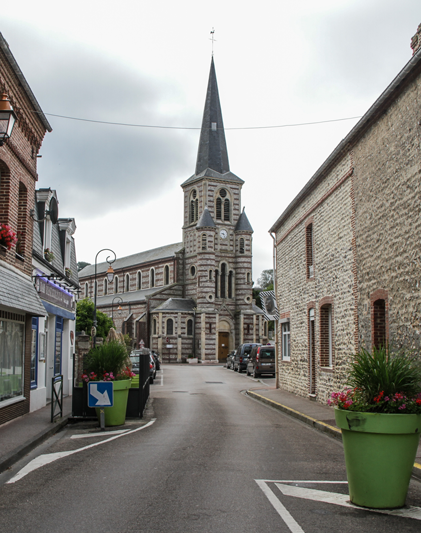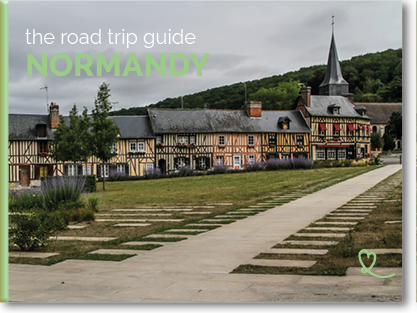The Overlord Museum is a must-see if you want to learn more about the history of the Second World War and the Normandy Landings. Located in Colleville-sur-Mer opposite Omaha Beach, it boasts a unique collection of over 10,000 objects. You’ll also discover immersive, realistic reconstructions that immerse you in the atmosphere of the D-Day landings.
This museum is much more than just a collection of objects; it’s a place of memory and transmission that plays an important role in the preservation of history and the duty of remembrance.
In this article, you’ll find some useful tips to help you prepare for your visit and have a wonderful time!
BEFORE OUR TIPS + PHOTOS
HERE ARE OUR favorites

Our favorite car rental platform with great offers: DiscoverCars


Our favorite places to stay:
Hotel Domain de Bayeux, elegant and central – see photos and availability
Hotel Domaine d’Utah Beach, for the north – see photos and availability
Hôtel Ferme de la Rançonnière, the charm of the countryside – view photos and availability

This guide is completely independent, based on our experiences. We visited the region anonymously, making our own choices and paying our bills in full.
Why visit the Overlord Museum
Is the Omaha Beach Museum worth it? Our opinion:
Absolutely! We believe that the Overlord Museum, located in Colleville-sur-Mer opposite Omaha Beach is a must-see. Its name refers to Operation Overlord, the code name for the Allied invasion of the Normandy beaches. It allows young and old alike to learn more about the history of the Second World War and the Normandy Landings.

His unique collection of over 10,000 objects impressed us. It includes vehicles, weapons, uniforms, documents and soldiers’ personal belongings. The exhibition was a vivid reminder of this tragic period. We also really enjoyed the immersive, realistic reconstructions. They allowed us to immerse ourselves in the atmosphere of the D-Day landings and to understand what was at stake in this key episode in history.
The museum is much more than just a collection of objects. It is a place of remembrance and transmission, playing an important role in the preservation of history and the duty to remember.

Why is the Overlord Museum famous?
The Overlord Museum is a must-see for anyone wishing to learn more about the Normandy Landings and the Second World War. We advise you to visit it to better understand this crucial event in history.
The Overlord Museum is famous for its role in preserving the history of the Normandy Landings during WW2. It tells the story of D-Day, when Allied forces landed on the beaches of Normandy in 1944. The museum displays exclusive objects and documents that have helped us to understand this decisive event in the war. It’s an important place to remember and pay tribute to the soldiers who fought for freedom.
If you’re a history buff and want to celebrate the 80th anniversary of D-Day, read our dedicated article.

We learned that the Overlord Museum is recognized as one of the best museums dedicated to the Second World War in Europe. In fact, it’s one of the best museums in Normandy!
What’s more, we believe that being located close to the D-Day landing beaches and numerous military cemeteries, it plays an important role, both in preserving memory and in passing on history to new generations.

Our favorite moments
We thoroughly enjoyed our visit to this museum, which we found immersive and educational. Among our favorites:
- The magnificent collection of objects on display: uniforms, tools, equipment, weapons and other personal items that belonged to the soldiers.
- All tanks and vehicles, inside and out. The fact that they were placed in reconstructed scenes helped us to better understand their usefulness. So we were able to project ourselves easily into the events of the Battle of Normandy.
- We found the museum very visual and easy to visit.

WHERE TO STAY IN Bayeux
Option 1: Central and close to downtown
Within 5 to 10 minutes’ walk of the historic center, you’ll find beautiful mansions transformed into welcoming hotels and B&Bs. We recommend..:
- Hotel Domaine de Bayeux installed in an 18th century mansion – see prices, photos and availability.
- Hôtel le Lion d’Or in a former 18th-century post office building – see prices, photos, availability.

Option 2: in the countryside
The Normandy countryside is very green and inspiring. At the bend in the forest or in the fields, pretty villages with beautiful buildings transport you to another world, or even another era.
- Hotel Domaine de la Rançonnière, only 20 minutes from Bayeux – see prices, photos and availability.

Option 3: By the sea
The seaside is just 15 minutes drive from Bayeux. Breathe the sea air while enjoying easy access to Bayeux and the D-Day beaches.
- Hotel Villas d’Arromanches – see prices, photos and availability.

History in brief
We learned that the history of this museum is closely linked to that of Michel Leloup, founder of the collection, born in 1929. Having lived through the Second World War as a teenager, he witnessed the Battle of Normandy. Bombardments, wrecks of tanks and military vehicles littered the countryside.

In the early 70s, we learned that Michel had discovered the wreckage of an Sd Kfz 251 (semi-tracked tank) in a sawmill in Normandy. He then decided to restore it. We understand that this event marked the beginning of his collection of military vehicles. In 1987, he opened his first museum in Falaise: the Musée Août 44 – bataille de la poche de Falaise. However, we were told that the latter only reached a limited audience. So Michel and his son Nicolas decided to create a larger, more accessible museum.

Today, the Overlord Museum’s collection, which we were delighted to observe, includes several thousand items and no fewer than 40 vehicles, tanks and cannons. You’ll discover one-of-a-kind pieces that took thousands of hours to restore. This collection bears witness to the history and technical heritage of the Second World War.

Access: Omaha Beach Museum, Colleville-sur-Mer
Where is the Overlord Museum?
- NearOmaha Beach
- 15min walk from the center of Colleville-sur-Mer
- 3min drive from Normandy American Cemetery
OUR ADVICE FOR RENTING A CAR IN Normandy
- Compare prices on our preferred platform: DiscoverCars – one of the best rated sites.
- Choose a car that is comfortable enough (distances can be long) but compact (some parking lots and villages are narrow).
- Think of thecomplete insurance (some roads are tortuous and narrow).
- There is a lot of demand, book it early.

How to get there?
From the village center of Colleville-sur-Mer, you can easily walk to the Overlord Museum in about 15 minutes. Access is easy, it’s all flat.
On the other hand, if you’re coming from further afield, you’ll probably have to reach the museum by car.
- By train: the nearest train station is Bayeux. Then it’s a 25-minute drive to the museum.
- By bus: Route 120 from Bayeux, stop at Colleville-sur-Mer/Musée Overlord on the NOMAD network. Click here for route maps, timetables and fares.
- By car: to get to the museum, you’ll have to drive through the countryside and small villages, but you shouldn’t expect any particular difficulties.

Parking
Free parking is available close to the museum entrance.
If you’re coming by bike, there are a few spaces available at the entrance for parking your two-wheeler. On the other hand, there aren’t many spaces, so on busy days the bike park may be full.

DISCOVER Bayeux
- Best things to do in Bayeux
- Where to sleep in Bayeux: our best hotels
- Rent a car in Bayeux
- Where to eat in Bayeux: our best restaurants
- Visit the Bayeux Tapestry Museum
- Visit the Baron Gérard Museum of Art and History
- Visit the Battle of Normandy Museum
- Discover the Notre-Dame Cathedral in Bayeux
- Discover the British Military Cemetery
Useful tips: duration, schedules, eating…
Best time to visit
To make the most of the museum and its different areas, we recommend arriving in the morning when it opens. Preferably outside the summer months (July, August). This way, you can avoid the crowds. The Overlord Museum is very busy, especially during the French school vacations. All the more so as it enjoys an international reputation.

In any case, to make the most of the outdoor exhibition, choose a day when it’s not raining, as this will make your visit all the more enjoyable. Otherwise, we advise you to be well equipped for the Normandy rain!
We think this place is a must-see on your visit to Normandy. Especially if you’re planning to visit the D-Day Beaches.
Length of visit and main difficulties
We recommend that you allow between 2 hours and half a day, depending on your level of interest in the D-Day landings.
The indoor tour and outdoor exhibition are on the first floor, so you don’t have to climb any flights of stairs.

Advice on how to visit
Inside, the tour is easy to follow. Let yourself be carried from one scene to the next, at your own pace and according to your emotions. You’ll discover the different stages of the Battle of Normandy.

USE OUR GUIDE TO PLAN A
DREAM TRIP TO Normandy
All the information you need for your trip:
- 8 maps that make planning easier
- 160+ pre-selected locations
- Practical advice
- 300+ photos to help you choose

Visiting with children
The Overlord Museum is ideal for children. It’s an interactive, immersive museum. We believe it’s vital that young people learn more about the Second World War, and become aware of its impact at every level. This museum takes to heart the duty of remembrance.

The museum provides educational booklets to help children discover Operation Overlord. One booklet for primary school (ages 6-10), another for secondary school (ages 11-14). Booklets are sold for €1, on site only. Find out more here.
Schedules and rates
The Overlord Museum is open at the following times:
- February – March – October – November – December: daily, 10 a.m. to 5:30 p.m.
- April – May – September: daily, 10 a.m. to 6:30 p.m.
- June – July – August: daily, 9:30 a.m. to 7 p.m.
- Closed in January.
We strongly advise you to check our opening times and special closing days before your visit. More info here.
Prices are €9.50 for adults and €7 for children aged 7 to 15.

Catering
There are no catering facilities on site. On the other hand, a few picnic tables have been set up on the outskirts of the museum, not far from the exhibits on display outside.

Otherwise, as soon as you’re feeling hungry, we recommend taking the car to Bayeux. The town is home to some excellent restaurants. Here are our favorites:
- Salon de thé & petite cantine Les Volets Roses: in an Alice in Wonderland setting, you’ll enjoy a truly immersive taste experience you won’t soon forget! Situated opposite Bayeux’s majestic Notre-Dame Cathedral, this pretty spot worthy of a novel from another era is even open on Sundays.
- Restaurant L’Acte 2: tradition, authenticity, balance and indulgence – that’s the promise of this restaurant in the historic district of Bayeux. The card is provided, you will have the choice between Norman specialities and classic dishes revisited. You’ll be sure to eat a balanced, home-cooked meal made with seasonal produce!
- Restaurant Le Moulin de la Galette: The restaurant Le Moulin de la Galette is located in a building steeped in history, as the actual mill still turns and dates back to the Middle Ages. This establishment offers local and truly generous cuisine. It’s a crêperie like no other.
Find out more about the above establishments and our complete selection of the town’s best restaurants in our our article on where to eat in Bayeux.

Life-size re-enactments: relive Operation Overlord
We loved immersing ourselves in history and reliving one of the most significant moments of the Second World War: the Normandy Landings. This episode, codenamed “Operation Overlord”, is represented in a highly immersive way in this museum dedicated to it. Immerse yourself in the world of the Battle of Normandy with our captivating life-size reconstructions. During a visit, you can almost feel the intense atmosphere of this historic episode.

We liked the way the story is told in the museum. Follow the different phases of Operation Overlord through life-size reconstructed scenes. From the preparations on the evening of June 5, 1944, to the arrival of the Allies in Normandy on the morning of June 6, the famous D-Day. But also the evacuation of wounded soldiers a few days after the start of the battle, for example.

This way of presenting the story and its various details enabled us to immerse ourselves in the Normandy Landings and better understand what was at stake. We think it’s an excellent scenography that will help children better assimilate the notions evoked both at school and in the museum’s explanations. What’s more, written indications are available next to each reconstruction, object or vehicle, so you can always put what’s on display in context.

The collection of authentic objects, silent witnesses to D-day
We were impressed by the collection of objects on display in the museum. It’s not just about weapons or military vehicles. We’re talking about several hundred personal objects that were part of the soldiers’ daily lives. They help to humanize the story of D-Day: it’s not just a piece of history, thousands of men fought and many lost their lives. The exhibits will help you put names, faces and stories to the numbers we all know.

For example, we were delighted to discover models of the axes used by some of the soldiers gliding to the beaches. It allowed them to break open the wood-and-canvas hull, to escape if necessary. It could also prove formidable in close combat.

We were also fascinated by the discovery of the German army’s Pak 40 anti-tank gun. This type of defense equipment was an important element in the battles fought between Germany and the Allies. Indeed, we learned that he was capable of destroying any tank, thus protecting his army. However, you’ll find that its weight made it difficult to move, a weak point for this formidable piece of equipment.

The museum also features a wide range of uniforms. We liked distinguishing the different elements of these. Canvas gaiters, belt, American M1 helmet, HBT(Herringbone Twill) mesh jacket, etc. This immersed us even more in the story. We enjoyed observing all the details of the different infantry equipment and trying to understand the purpose of each one. Indeed, every detail counted, and the military shouldn’t be overloaded with superfluous items.

Testimonies: the protagonists of D-Day
As you visit the interior of the exhibition, you’ll discover a space filled with photos of combatants and their testimonies. We enjoyed browsing this gallery. It lends a very intimate, human dimension to the story of Overlord, and to the re-enacted scenes you will have seen during your visit.

Museum founder Mr. Leloup and his son invite you to discover these moving portraits and testimonials. They hid under the uniforms and helmets of the men of the ” Greatest Generation “, almost all of whom have now disappeared. Some of them, who survived the war, provide a gripping account of this episode in their lives.

Military equipment used in the Battle of Normandy
The Famo, a treasure from the Leloup collection
Among the most impressive pieces in the museum founder’s collection was the Schwerer Zugkraftwagen 18 ‘FAMO’ (Sd Kfz 9). Better known as “Famo”. We learned that this semi-tracked tractor, built in November 1943, is considered the largest artillery tractor ever built by the German army. It was used in Normandy for setting up coastal batteries and for repairing Panzer (tank) units.

We’ve discovered that the Famo you’ll be looking at was found by Michel Leloup in l’Aigle, Orne, in a very degraded state. It had been stored by a public works company for conversion into a bulldozer. From 2006 onwards, the room was restored with great care. This renovation took over 10,000 hours over 7 years to complete. This information impressed us!

We also learned that of the 2,500 Famos manufactured during World War II, only 12 still exist in the world today. On learning this, we took an even closer look at this rare and precious piece.

The Sherman tank, an essential part of the Battle of Normandy
We also enjoyed watching the American M4 Sherman tank. It was one of the tanks most used by the Allies in WW2. Particularly during the Battle of Normandy. It has become the essential armored weapon for Allied forces. It has been recognized for its simple design, reliability, speed and ease of maintenance. We learned from the exhibition that it proved its worth during the battle ofEl Alamein.

We were astonished to learn that after the war, the Sherman remained in service in many armies around the world! Today, many examples are preserved in museums. This testifies to the importance of this tank in military history.

The U.S. Army’s iconic motorcycle
Among the many military vehicles on display at the Overlord Museum, we particularly appreciated the Harley Davidson WLA 45 motorcycle. It’s not a rare coin, but it’s important because it was used extensively by the Americans during WW2. These include police operations, escorts and convoys. The example you can see in the museum was kept on a property in the Eure region, where it was acquired by the museum in the late 1970s.

Outdoor exhibition: remarkable military vehicles
Outside the museum, we discovered some exceptional pieces that played a key role in the liberation of Europe. Among the most remarkable pieces, you’ll be able to admire..:
- a Bailey Bridge, a portable prefabricated bridge used by the Allies to cross rivers and replace destroyed bridges,
- several American tanks,
- an 8.8-centimetre-calibre German anti-aircraft gun,
- 2 bunkers.

The Bailey Bridge, an incredible portable bridge
We realized on our visit that the Bailey Bridge is a historic symbol of victory. This bridge, whose principle we found fascinating, was brought to us by the Allied forces. It provided a temporary solution for crossing rivers and replacing damaged bridges. Bailey Bridge played a key role in the Liberation.

We were fascinated by the fact that this kit bridge could be assembled by 40 men in just 6 hours, without the help of machines! In Normandy, over 1,000 Bailey Bridges were used by the Allies to transport their logistics. That’s over 10 million tons of material!

The M10 Tank Destroyer
Don’t miss the M10 Tank Destroyer during your visit. It’s an armored vehicle. It was designed on the basis of the Sherman medium tank, which you’ve probably already seen inside the museum. Equipped with an open turret, it can counter enemy tank movements and destroy them. It is much appreciated by soldiers for its agility and speed.
We were amused to discover that he was nicknamed Wolverine by the British.

Flak 36 anti-aircraft gun
We discovered the 8.8 cm Flak 36 during our visit. Little did we know that this is one of the most famous German artillery pieces of the 2nd World War. This machine was apparently renowned for its manoeuvrability and efficiency. A total of 21,230 units were produced during the war. We found this figure impressive. It was hard to imagine that it was necessary to use so many Flak 36 guns in addition to all the other weapons.

At the exhibition, you’ll learn that a trained crew could bring the Flak 36 into firing order in just 2.5 minutes! Do you find it impressive? We do. This exceptional gun was capable of piercing 84mm of armour at a distance of 2000m! This information made us realize that this was what made it one of the most powerful weapons of the Second World War.
The model on display at the museum is fitted with the anti-tank armor that was widely used in the Battle of Normandy.

If you’re a history buff and want to celebrate the 80th anniversary of D-Day, read our dedicated article.
Subscribe to our Newsletter
- Get away from it all with Region Lovers’ beautiful destinations!
- Once a month
- Advertising-free
Frequently asked questions
Does the film Overlord have anything to do with Operation Overlord ?
Despite its misleading title, the film is a horror drama set during the Second World War. It tells the story of a group of American paratroopers who find themselves in a French village infested by Nazi zombies.
The film uses the historical context of the Normandy landings as the backdrop for a fantastic and frightening story. It is by no means a historical reconstruction or a factual account of the events of June 6, 1944.

What is Omaha Beach?
It was one of the 5 beaches where Allied forces, mainly American troops, landed in Normandy. However, the assault on Omaha Beach was particularly difficult due to natural obstacles and formidable Nazi defenses. The American soldiers encountered major difficulties due to intense enemy fire and the topography of the terrain. Despite this, thanks to their courage, determination and the support of amphibious troops, they finally succeeded in securing the beach, albeit with heavy losses. That’s why it’s known as ” Bloody Omaha”.
To find out more about this emblematic D-Day beach, read our article: What to do on Omaha Beach.

What are the differences between the Overlord Museum and the Utah Beach Museum?
The Overlord Museum and the Utah Beach Museum are both dedicated to the history of the Normandy Landings during the Second World War. However, they have different approaches to presenting the story.
The Overlord Museum focuses on the entire Battle of Normandy. Including the military operations and events that led to the liberation of France. It features a large collection of military objects, vehicles and weapons. As well as interactive and immersive exhibits. All to help visitors understand the experience of soldiers and civilians during the war.
The Utah Beach Museum focuses specifically on the D-Day landings onUtah Beach, one of the 5 D-Day landing beaches. It features artefacts and exhibits on preparations for the landings, D-Day itself and subsequent operations in the region.

Is the Overlord Museum the same as the Omaha Beach Memorial Museum?
No, the Overlord Museum and the Omaha Beach Memorial Museum are two separate museums.
The Overlord Museum is located in Colleville-sur-Mer, close to Omaha Beach. It focuses on the whole of Operation Overlord, including preparations, D-Day and the Battle of Normandy. The museum features an impressive collection of military artefacts, vehicles and uniforms. As well as realistic reconstructions of scenes from the battle.
The Omaha Beach Memorial Museum is located on Omaha Beach itself, in Saint-Laurent-sur-Mer. It is dedicated specifically to the history of this beach and the battle that took place there on June 6, 1944. The museum features soldiers’ personal objects, weapons, uniforms and military equipment, as well as veterans’ testimonials. Dedicated article coming soon.
Although the two museums complement each other and offer a unique visitor experience, they are different in their approach and content.

PLAN YOUR TRIP TO Normandy
Inspiration destinations
- Deciding where to go in Normandy – the best destinations
- Our weekend ideas: best-of, romantic, unusual, seaside, luxury, family
- 16 seaside hotels in Normandy
- The most beautiful charming hotels in Normandy

Best of

Practice
- Where to stay in Normandy – best places and hotels
- See our tips for renting a car at CDG airport, Orly airport, Beauvais airport, Caen, Rouen, Bayeux…






